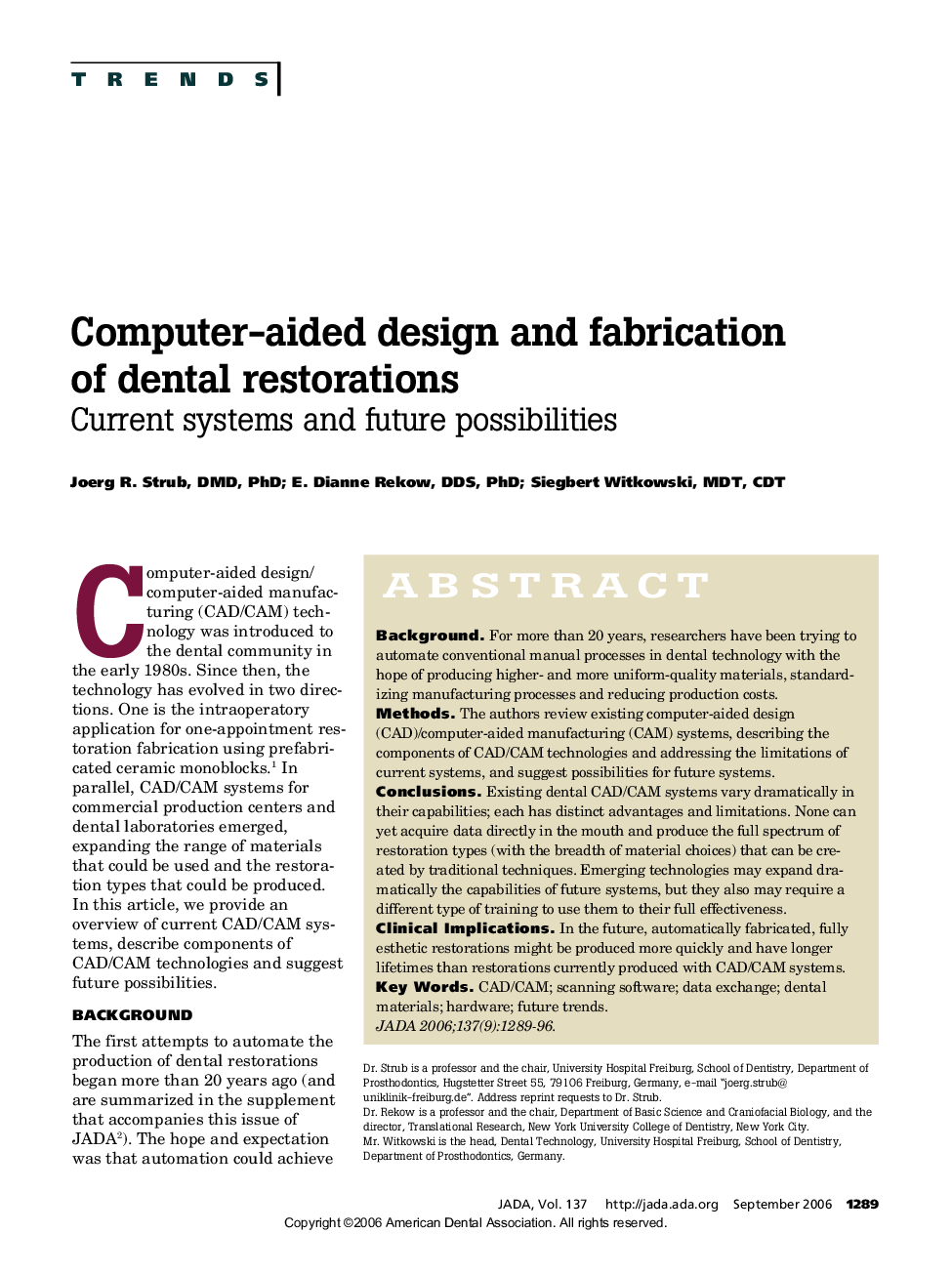| Article ID | Journal | Published Year | Pages | File Type |
|---|---|---|---|---|
| 3140061 | The Journal of the American Dental Association | 2006 | 8 Pages |
ABSTRACTBackgroundFor more than 20 years, researchers have been trying to automate conventional manual processes in dental technology with the hope of producing higher- and more uniform-quality materials, standardizing manufacturing processes and reducing production costs.MethodsThe authors review existing computer-aided design (CAD)/computer-aided manufacturing (CAM) systems, describing the components of CAD/CAM technologies and addressing the limitations of current systems, and suggest possibilities for future systems.ConclusionsExisting dental CAD/CAM systems vary dramatically in their capabilities; each has distinct advantages and limitations. None can yet acquire data directly in the mouth and produce the full spectrum of restoration types (with the breadth of material choices) that can be created by traditional techniques. Emerging technologies may expand dramatically the capabilities of future systems, but they also may require a different type of training to use them to their full effectiveness.Clinical ImplicationsIn the future, automatically fabricated, fully esthetic restorations might be produced more quickly and have longer lifetimes than restorations currently produced with CAD/CAM systems.
